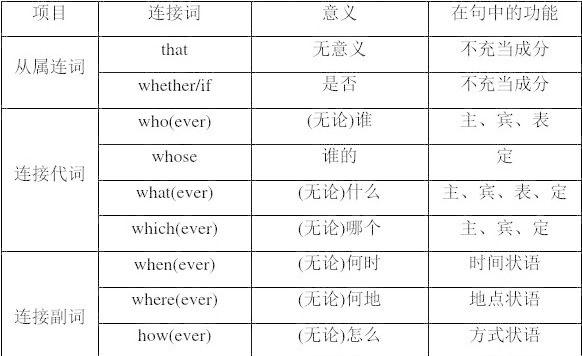名词性从句在英语语法中常作为宾语,通常出现在主句的动词后面。常用的连接词包括"that"、"what"、"if"、"whether"、"who"、"whom"、"whose"、"where"、"when"和"how"等。主句的动词通常是带有宾语的动词,如"believe"、"know"、"ask"、"wonder"、"think"、"realize"、"understand"、"hope"、"expect"等。掌握名词性从句作为宾语的用法对提高英语语法水平至关重要。

名词性从句是由连接词引导的从句,在句子中扮演名词的角色。当名词性从句作为宾语时,它通常出现在主句的动词后面,作为动词的宾语。
以下是一些例子:
- I believe that he is telling the truth.(我相信他说的是真的。)
- She doesn't know what she wants to do with her life.(她不知道自己想要做什么。)
- They asked if I could help them with their project.(他们问我能否帮助他们完成项目。)
在这些例子中,名词性从句分别作为 believe、know 和 asked 这些动词的宾语。连接词 that、what 和 if 引导了这些从句。
除了上述连接词外,还有其他连接词可以引导名词性从句作为宾语,例如 whether、who、whom、whose、where、when 和 how 等等。
需要注意的是,名词性从句作为宾语时,主句的动词通常是一个带有宾语的动词,例如 believe、know、ask、wonder、think、realize、understand、hope、expect 等等。
